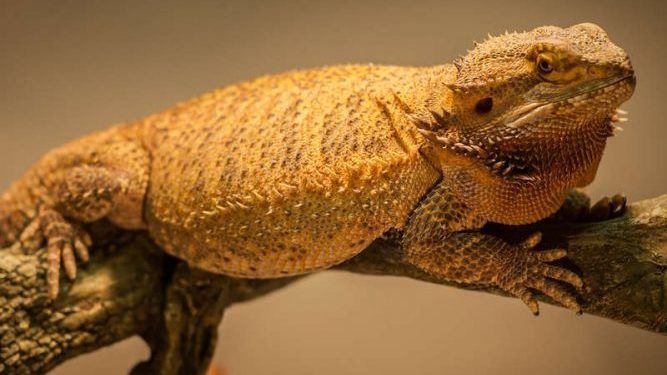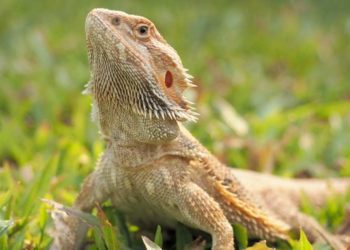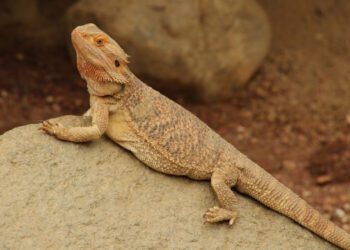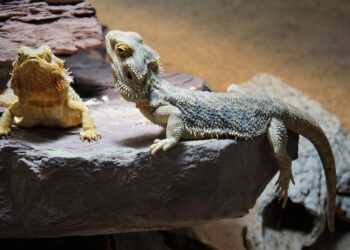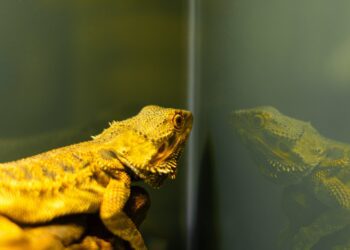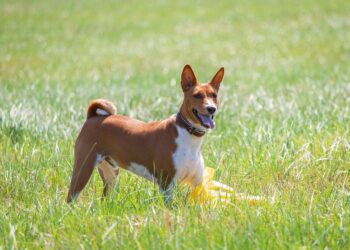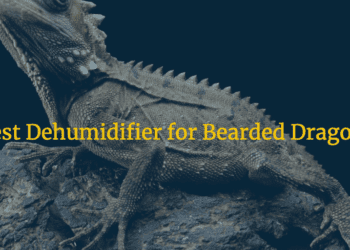A bearded dragon is an animal that belongs to the reptile family and they usually prefer dry weather that is why they are generally found in the continent of Australia. These are also kept as pets but they are sensitive so they need lots of care that is why their owners need to know everything about their bearded dragon.
We will discuss the baby bearded dragon in this article and basically, we discuss the fat belly of the baby bearded dragon and how we should deal with it and its various effects.
Contents
What is Baby Bearded Dragon Fat Belly?
The baby bearded dragon has a fat belly due to the excess abdominal fat surrounding the organs in their stomach. The belly fat is easily noticeable from the outside as there are fat pockets that are kind of gathered over there even if the baby bearded dragon is perking up and all that fat is sagging and dragging across the ground because too much fat will really weigh them down.
Read related:
Why Does a Bearded Dragon Have a Fat Belly?
The reasons due to which the baby bearded dragon has a fat belly are as follows:
- The first and the foremost reason is the overweight because every owner wants to feed their baby bearded dragon with all the possible food available and that leads to the increase in the weight of the baby bearded dragon which further on leads to the fat belly.
- Another reason is that they do not have self-control with their dietary habitat and that is why they become fat and the fat around the belly also starts increasing with time.
- Also whatever you will feed your baby bearded dragon with they will naturally eat it without any self-control and the weight will increase and the belly fat will also increase.
- Baby bearded dragon is getting fat quickly at the age of 6 months as they can gain 20% of their body weight every month. This is why they are fat when they are young or when they are babies and the belly also starts becoming fat.
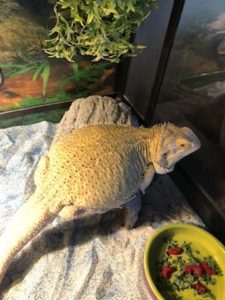
Signs to Consider
The signs that are to be considered whether the belly is getting fat of the bearded dragon are as follows:
- The tail of the bearded gets fat you can check that if the base of the tail is thick, beefy, and squishes this clearly means there is a thin layer of excess fat surrounding the entire surface of the tail of the baby bearded dragon. If the tail would have been normal then it would have the compact structure used for balance.
- The abdominal fat due to the excess eating makes the visibility of the fat clear from outside and anyone can understand by looking at the bearded dragon that they are gaining fat near the belly.
- The axillary fat pocket starts forming. The axillary fat pocket is a fat pad that is formed behind the baby bearded dragon’s forearm. The bearded dragons generally do not have any fat pad behind the forearms but when they are fat or gaining weight it acts as the storage site for the surplus food and this leads to an increase in the belly fat of the baby bearded dragon.
- You can also notice the fat jowls of the baby bearded dragon that is a fat chin. A loose hanging skin that is under the chin directly below the right section, you can notice it whether it is too fat or just fine. This is a clear indication of the fatness in your baby bearded dragon.
- There are 2 little squish pads right behind the baby bearded dragon’s eyes that are known as the cranial fat pads. These cranial pads are easy to identify and one can understand from those pads. This also clearly indicates that your baby bearded dragon has a fat belly and the weight is increasing.
Impacts:
The impacts that are suffered by the baby bearded dragon due to the fat belly are as follows:-
- The metabolic bone disease occurs when the baby bearded dragon is not able to absorb the calcium properly or are not receiving the calcium properly.
- Also, the yellow fungus occurs which discolors a baby bearded dragon’s scales and then makes them appear yellow. The scales become discolored and then they break off and can reveal raw and very sensitive tissue.
- Parasites also attack them as they become a good host for the parasites and the bearded dragon becomes very lethargic.
- The baby bearded dragon’s also become prone to cancer as the belly fat increases the risk of cancer in them.
- The baby bearded dragon’s eyes start getting sunken which gives a clear indication that the baby bearded dragon is not healthy.
Prevention:
The steps that one should follow so that the baby bearded dragon loses its belly fats are as follows:-
- A balanced diet with plenty of greens should be provided to the baby bearded dragon that is necessary and does not feed them with an excess of food.
- Also, the owner should provide them with fruits that are healthy for them and will help them to lose their fat belly such as melon, figs, kiwi, guava, raisins, grapes, apricots, pears, etc.
- You should always feed the baby bearded dragon with a reliable feeder insect supplier. You should never feed them with the bugs that are found outside your house as they can be poisonous and can infect your pet.
- Always feed them with proper meat to vegetable ratio as you know that your baby bearded dragon is overweight you should increase the ratio of the vegetable and decrease the ratio of meat from their diet.
- Also, remove the high-calorie food from their daily diet like fatty worms in order to reduce their belly fat.
All these steps should be properly followed so that your baby pet lives a happy and healthy life without any complications in the future.
Conclusion:
On should be very careful with their baby bearded dragon, as they are very sensitive and the belly fat should be taken up as a serious issue as it can cause the problem to your bearded dragon in the long run.


